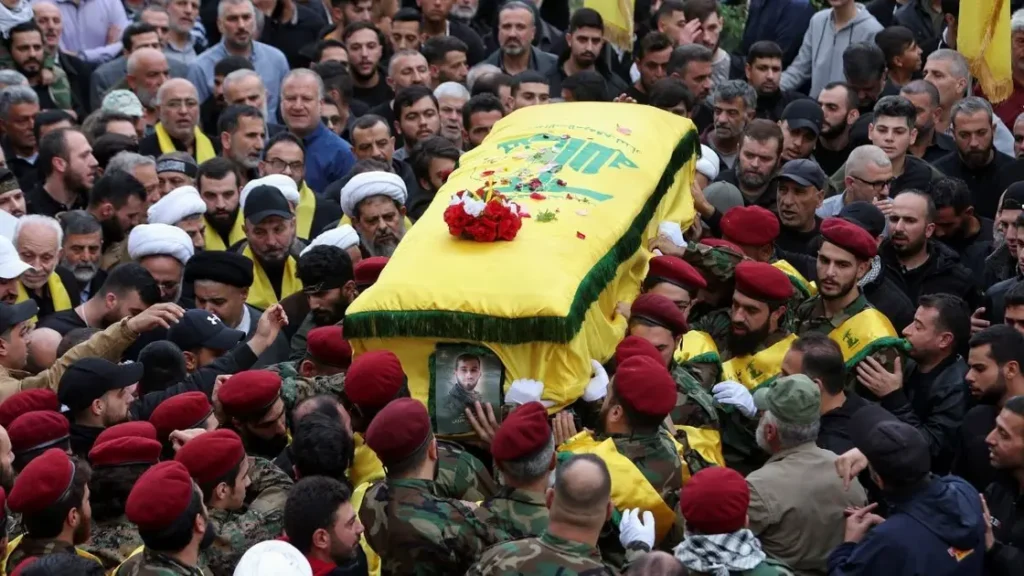Weeks of hostilities across the Lebanese-Israeli border have escalated, with growing casualties on both sides and a war of words fueling concerns of a widening conflict between Israel and the Iran-backed Lebanese group Hezbollah.
Israeli strikes killed two people in south Lebanon on Monday, according to a first-responder organization affiliated to the Hezbollah-allied Amal Movement.
On the Israeli side, a Hezbollah missile attack on Sunday wounded several workers from the Israel Electric Company and one died of his wounds on Monday, the firm said.
Hezbollah has been trading fire with Israeli forces since its Palestinian ally Hamas went to war with Israel on October 7.

Smoke rises over Lebanon, as seen from Israel-Lebanon border in northern Israel, November 12, 2023. (Reuters)
The exchanges mark the deadliest violence at the border since Israel and Hezbollah fought a month-long war in 2006. So far, more than 70 Hezbollah fighters and 10 civilians have been killed in Lebanon, and 10 people including seven troops have been killed in Israel. Thousands more on both sides have fled shelling.
Until now, violence has largely been confined within a band of territory on either side of the border.
Israel has said it does not want war on its northern front as it seeks to crush Hamas in the Gaza Strip, while sources familiar with Hezbollah’s thinking said its attacks have been designed to keep Israel forces busy while avoiding all-out war.
The United States has said it doesn’t want conflict to spread around the region, sending two aircraft carriers to the area to deter Iran from getting involved. But that has not stopped the escalating rhetoric from Hezbollah and Israel.
Hezbollah leader Hassan Nasrallah said on Saturday the Lebanon front would “remain active,” and said there was “a quantitative improvement” in the pace of the group’s operations.
Israeli Prime Minister Benjamin Netanyahu warned Hezbollah on Monday not to broaden its attacks.
“This is playing with fire. Fire will be answered with much stronger fire. They should not try us, because we have only shown a little of our strength,” he said in a statement.
Asked at a news conference on Saturday about what Israel’s red line was, Israeli Defense Minister Yoav Gallant said: “If you hear that we have attacked Beirut, you will understand that Nasrallah has crossed that line.”
‘Tit-for-tat’
Lebanon took years to rebuild from the 2006 war and can ill afford another one, four years into a financial crisis that has impoverished many Lebanese and paralyzed the state.
Israel has long seen Hezbollah as the biggest threat along its borders. The 2006 war killed 1,200 people in Lebanon, mostly civilians, and 157 Israelis, mostly soldiers.
US Defense Secretary Lloyd Austin characterized the violence as “tit-for-tat exchanges between Lebanese Hezbollah and Israeli forces in the north,” predicting Israel would remain focused on the threat from Hezbollah “for the foreseeable future.”
“And certainly no one wants to see another conflict break out in the north on Israel’s border in earnest,” he told reporters in Seoul, although he said it was hard to predict what might happen.
Mohanad Hage Ali of the Carnegie Middle East Center said: “I can definitely see a wider escalation but I am not sure about a full conflict that nobody wants.”
“Nobody wants one on one hand, and I think the US is playing a strong role keeping things under control,” he said.
Source: Al Arabiya


